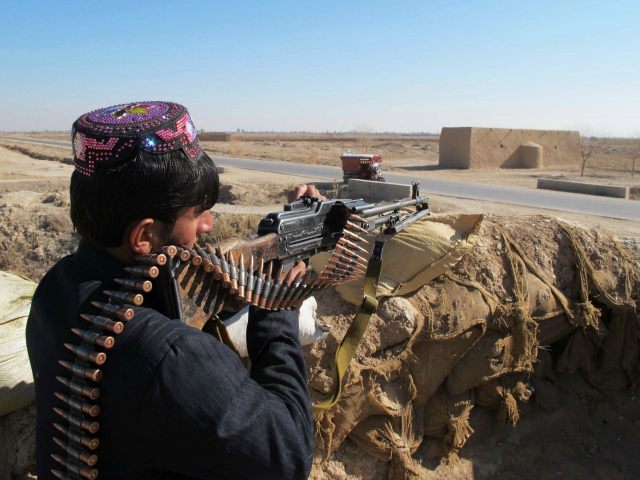The Taliban has officially conquered five of the 14 districts in southern Afghanistan’s restive Helmand province, the New York Times (NYT) reports, citing Afghan government officials.
That means the Taliban controls an estimated 36 percent (more than one-third) of Helmand province, which lies along Afghanistan’s border with Pakistan.
The Pentagon has accused Pakistan of serving as a sanctuary for the Taliban and other terrorists.
Helmand has traditionally been a Taliban stronghold. It is located next to Kandahar province, which is considered the birthplace of the Taliban. Helmand has been one of the deadliest provinces for U.S.-led coalition forces throughout the ongoing war in Afghanistan.
The Times reports:
A large number of Taliban fighters attacked the government center in Khan Neshin District late Monday night, with heavy firefights continuing until 5 a.m. Tuesday, when government defenders finally fled, according to Col. Allah Dad. Colonel Dad is the commander of the Fourth Battalion of the Afghan Border Police, which was in charge of the area.
Khan Neshin became the fifth of Helmand’s 14 districts in which the government centers have fallen to the Taliban, mostly in recent months as a result of fighting that has continued at an intense pace through the winter. In at least two other districts, including Sangin and Kajaki, the Taliban control most of the territory except the government centers and are very active in at least four others, including part of the provincial capital. By many accounts, the insurgents control more than half of the provincial territory, and dominate much of the rest.
Some analysts report that the Taliban’s reach in Afghanistan is greater than at any point since their regime was dethroned by the United States military in 2001.
Citing United Nations data, the Times reported in October 2015 that “In all, 27 of Afghanistan’s 34 provinces [nearly 80 percent] had some districts where the [Taliban] threat level was rated high or extreme.”
According to The Long War Journal:
Over the past year, the Taliban have seized control of, or contested, a number of districts in a belt that spans southwestern Herat, eastern Farah, northern and central Helmand, Uruzgan, and northwestern Kandahar (see map above). While many of these districts are in remote areas, the Taliban have historically used these safe havens to organize operations against neighboring districts and provincial capitals in southern and central Afghanistan.
The Taliban has been able to seize territory in Helmand despite an increase in U.S. airstrikes targeting crucial districts in the province, notes the Times. Moreover, a U.S. Special Operations force has been deployed to combat the Taliban on the ground.
“Last month, a new battalion of American soldiers, believed to number as many as 700, was sent to Helmand to provide support for Special Operations forces operating in the area, the United States military said,” reports the New York Times. “It was the largest new deployment of American soldiers outside a major base since the official end of the combat mission in December 2014.”
In its latest report to U.S. lawmakers, the watchdog agency appointed by Congress, known as the Special Inspector General for Afghanistan Reconstruction (SIGAR), revealed in January that more than five percent (27 districts across 11 provinces) of Afghanistan is under insurgent control or influence and about 20 percent is at risk of falling into the hands of terrorists.
Echoing the SIGAR report, Brig. Gen. Wilson Shoffner, a top spokesman for the U.S.-led NATO coalition in Afghanistan, indicated in January that at least 26 districts are under the control or influence of the Taliban.
There are reportedly a total of 407 districts across Afghanistan’s 34 provinces.

COMMENTS
Please let us know if you're having issues with commenting.